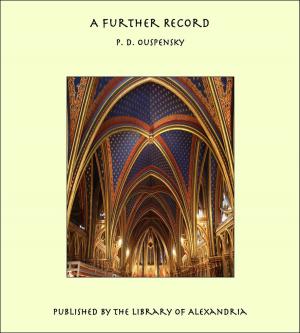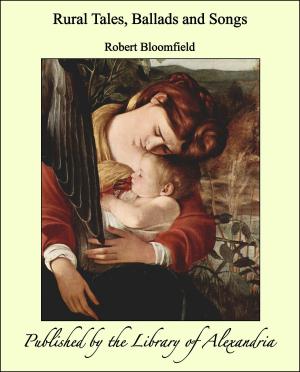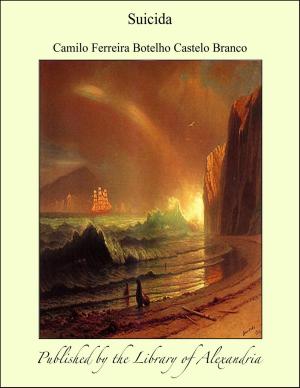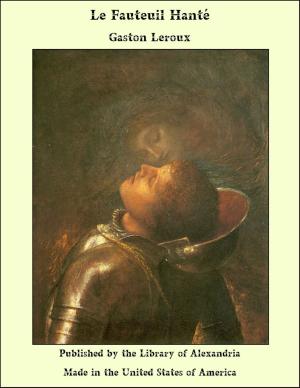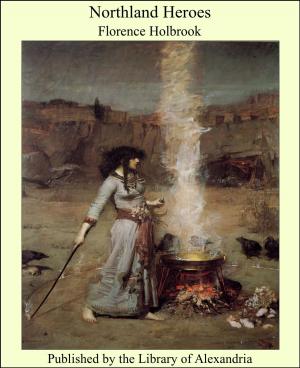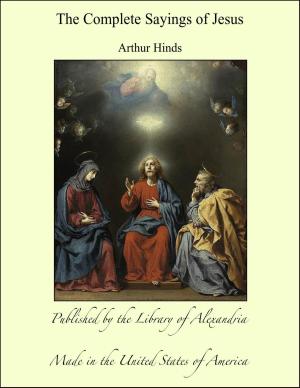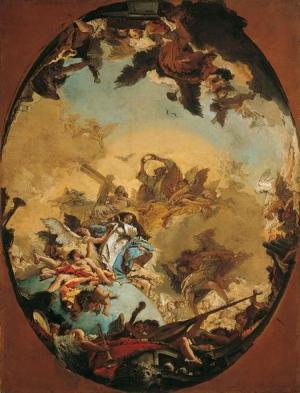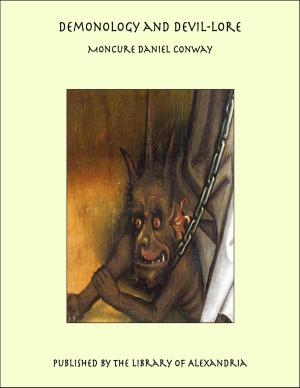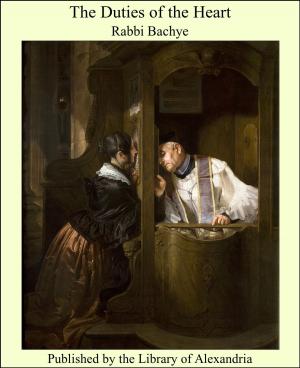Five Stages of Greek Religion
Nonfiction, Religion & Spirituality, New Age, History, Fiction & Literature| Author: | Gilbert Murray | ISBN: | 9781465535566 |
| Publisher: | Library of Alexandria | Publication: | March 8, 2015 |
| Imprint: | Language: | English |
| Author: | Gilbert Murray |
| ISBN: | 9781465535566 |
| Publisher: | Library of Alexandria |
| Publication: | March 8, 2015 |
| Imprint: | |
| Language: | English |
TO THE THIRD EDITION Anyone who has been in Greece at Easter time, especially among the more remote peasants, must have been struck by the emotion of suspense and excitement with which they wait for the announcement "Christos aneste," "Christ is risen!" and the response "Alethos aneste," "He has really risen!" I have referred elsewhere to Mr. Lawson's old peasant woman, who explained her anxiety: "If Christ does not rise tomorrow we shall have no harvest this year" (Modern Greek Folklore, p. 573). We are evidently in the presence of an emotion and a fear which, beneath its Christian colouring and, so to speak, transfiguration, is in its essence, like most of man's deepest emotions, a relic from a very remote pre-Christian past. Every spring was to primitive man a time of terrible anxiety. His store of food was near its end. Would the dead world revive, or would it not? The Old Year was dead; would the New Year, the Young King, born afresh of Sky and Earth, come in the Old King's place and bring with him the new growth and the hope of life? I hardly realized, when writing the earlier editions of this book, how central, how omnipresent, this complex of ideas was in ancient Greek religion. Attis, Adonis, Osiris, Dionysus, and the rest of the "Year Gods" were not eccentric divagations in a religion whose proper worship was given to the immortal Olympians; they are different names given [p. vi] in different circumstances to this one being who dies and is born again each year, dies old and polluted with past deaths and sins, and is reborn young and purified. I have tried to trace this line of tradition in an article for the Journal of Hellenic Studies for June 1951, and to show, incidentally, how many of the elements in the Christian tradition it has provided, especially those elements which are utterly alien from Hebrew monotheism and must, indeed, have shocked every orthodox Jew. The best starting point is the conception of the series of Old Kings, each, when the due time comes, dethroned and replaced by his son, the Young King, with the help of the Queen MOther; for Gaia or Earth, the eternal Wife and MOther of each in turn, is always ready to renew herself. The new vegetation God each year is born from the union of the Sky-God and the Earth-MOther; or, as in myth and legend the figures become personified, he is the Son of a God and a mortal princess. We all know the sequence of Kings in Hesiod: First Uranus (Sky), King of the World, and his wife Gaia (Earth); Uranus reigns till he is dethroned by his son Cronos with the help of Gaia; then Cronos and Rhea (Earth) reign till Cronos is dethroned by his son Zeus, with the help of Rhea; then Zeus reigns till . . . but here the series stops, since, according to the orthodox Olympian system, Zeus is the eternal King. But there was another system, underlying the Olympian, and it is to that Other system that the Year-Kings belong. The Olympians are definite persons. They are immortal; they do not die and revive; they are not beings who come and [p. vii] go, in succession to one another. In the Other series are the Attis-Adonis-Osiris type of gods, and especially Dionysus, whose name has been shown by Kretschmer to be simply the Thracian Deos or Dios nysos, "Zeus-Young" or "Zeus-the-son." And in the Orphic tradition it is laid down that Zeus yields up his power to Dionysus and bids all the gods of the Cosmos obey him. The mOther of Dionysus was Semele, a name which, like Gaia and Rhea, means "Earth." The series is not only continuous but infinite; for on one side Uranus (Sky) was himself the son of Gaia the eternal, and on the Other, every year a Zeus was succeeded by a "Young Zeus
TO THE THIRD EDITION Anyone who has been in Greece at Easter time, especially among the more remote peasants, must have been struck by the emotion of suspense and excitement with which they wait for the announcement "Christos aneste," "Christ is risen!" and the response "Alethos aneste," "He has really risen!" I have referred elsewhere to Mr. Lawson's old peasant woman, who explained her anxiety: "If Christ does not rise tomorrow we shall have no harvest this year" (Modern Greek Folklore, p. 573). We are evidently in the presence of an emotion and a fear which, beneath its Christian colouring and, so to speak, transfiguration, is in its essence, like most of man's deepest emotions, a relic from a very remote pre-Christian past. Every spring was to primitive man a time of terrible anxiety. His store of food was near its end. Would the dead world revive, or would it not? The Old Year was dead; would the New Year, the Young King, born afresh of Sky and Earth, come in the Old King's place and bring with him the new growth and the hope of life? I hardly realized, when writing the earlier editions of this book, how central, how omnipresent, this complex of ideas was in ancient Greek religion. Attis, Adonis, Osiris, Dionysus, and the rest of the "Year Gods" were not eccentric divagations in a religion whose proper worship was given to the immortal Olympians; they are different names given [p. vi] in different circumstances to this one being who dies and is born again each year, dies old and polluted with past deaths and sins, and is reborn young and purified. I have tried to trace this line of tradition in an article for the Journal of Hellenic Studies for June 1951, and to show, incidentally, how many of the elements in the Christian tradition it has provided, especially those elements which are utterly alien from Hebrew monotheism and must, indeed, have shocked every orthodox Jew. The best starting point is the conception of the series of Old Kings, each, when the due time comes, dethroned and replaced by his son, the Young King, with the help of the Queen MOther; for Gaia or Earth, the eternal Wife and MOther of each in turn, is always ready to renew herself. The new vegetation God each year is born from the union of the Sky-God and the Earth-MOther; or, as in myth and legend the figures become personified, he is the Son of a God and a mortal princess. We all know the sequence of Kings in Hesiod: First Uranus (Sky), King of the World, and his wife Gaia (Earth); Uranus reigns till he is dethroned by his son Cronos with the help of Gaia; then Cronos and Rhea (Earth) reign till Cronos is dethroned by his son Zeus, with the help of Rhea; then Zeus reigns till . . . but here the series stops, since, according to the orthodox Olympian system, Zeus is the eternal King. But there was another system, underlying the Olympian, and it is to that Other system that the Year-Kings belong. The Olympians are definite persons. They are immortal; they do not die and revive; they are not beings who come and [p. vii] go, in succession to one another. In the Other series are the Attis-Adonis-Osiris type of gods, and especially Dionysus, whose name has been shown by Kretschmer to be simply the Thracian Deos or Dios nysos, "Zeus-Young" or "Zeus-the-son." And in the Orphic tradition it is laid down that Zeus yields up his power to Dionysus and bids all the gods of the Cosmos obey him. The mOther of Dionysus was Semele, a name which, like Gaia and Rhea, means "Earth." The series is not only continuous but infinite; for on one side Uranus (Sky) was himself the son of Gaia the eternal, and on the Other, every year a Zeus was succeeded by a "Young Zeus


